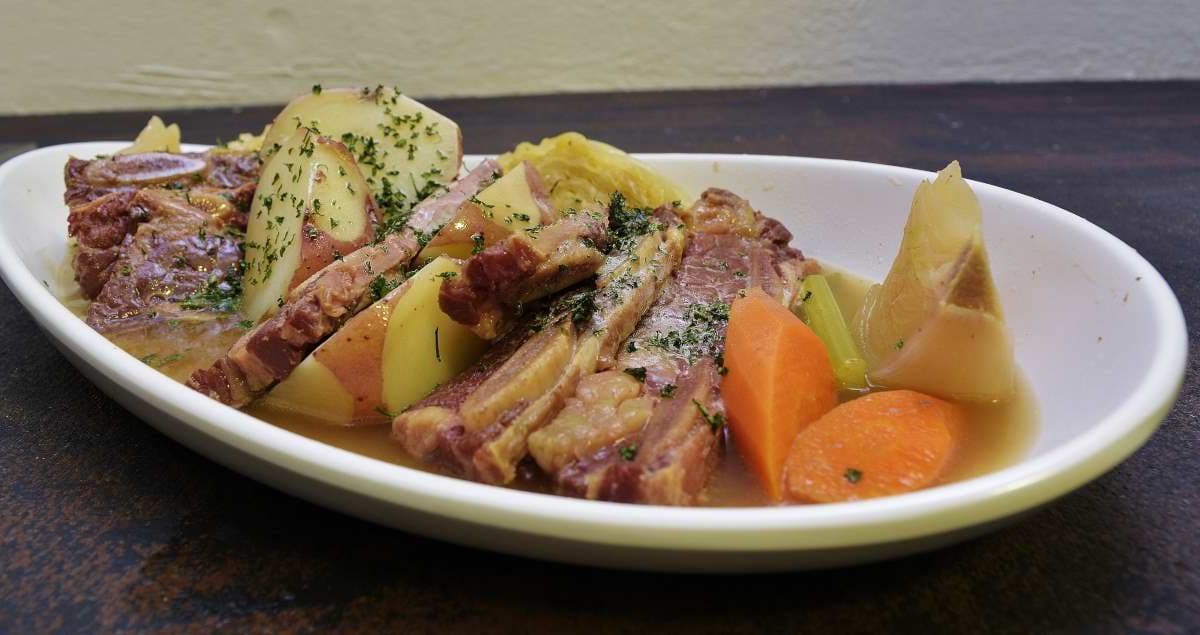
Serves 2-3
Level of difficulty: 2.0
Processing the corned beef
Vacuum seal the ribs in single layers so that heat is evenly distributed. Because of their shape, care should be taken to make sure the pouches are not taller than the water line.

Racks serve to separate each package of ribs. The water can then circulate freely between them. Lipavi containers can be filled in such a way that the lid comes in contact with the water in the vessel and self-seals around the rim. This saves heat and prevents pouches from floating or otherwise protruding from the surface of the water.
After vacuum sealing the ribs, process at
140 F/60 C for 60 hours.
Once the short ribs have been processed, they are pasteurized/preserved. Submerge the unopened package(s) in iced water until 70 F/21 C is achieved–this usually takes about 30 minutes. Refrigerate the ribs at 40 F/4 C until the day of service–they will keep in the current state for at least 2 weeks.
Day of Service
Prepare the rest of the components of the meal. Preheat the sous vide bath to
183 F/84 C.

While the sous vide bath is heating, start the broth in a sauce pot by combining the 2 quarts/2 liters water with the spices listed in the ingredients section: kosher salt, coarsely cut celery stalk, carrots, onions, and the peppercorns, allspice, cinnamon, ginger, coriander, cloves, crushed chilies, garlic powder, nutmeg, mustard seed and bay leaf. Bring to a simmer on the stove, and allow to cook for 1 hour while you prepare the other vegetables. Remove the celery, carrots, and onions from the broth after the first hour; the spices may remain.
Cut the vegetables into into desired shapes. Cut the cabbage into wedges–leave the root end intact to hold the wedges together. Vacuum seal all the vegetables together or separately.
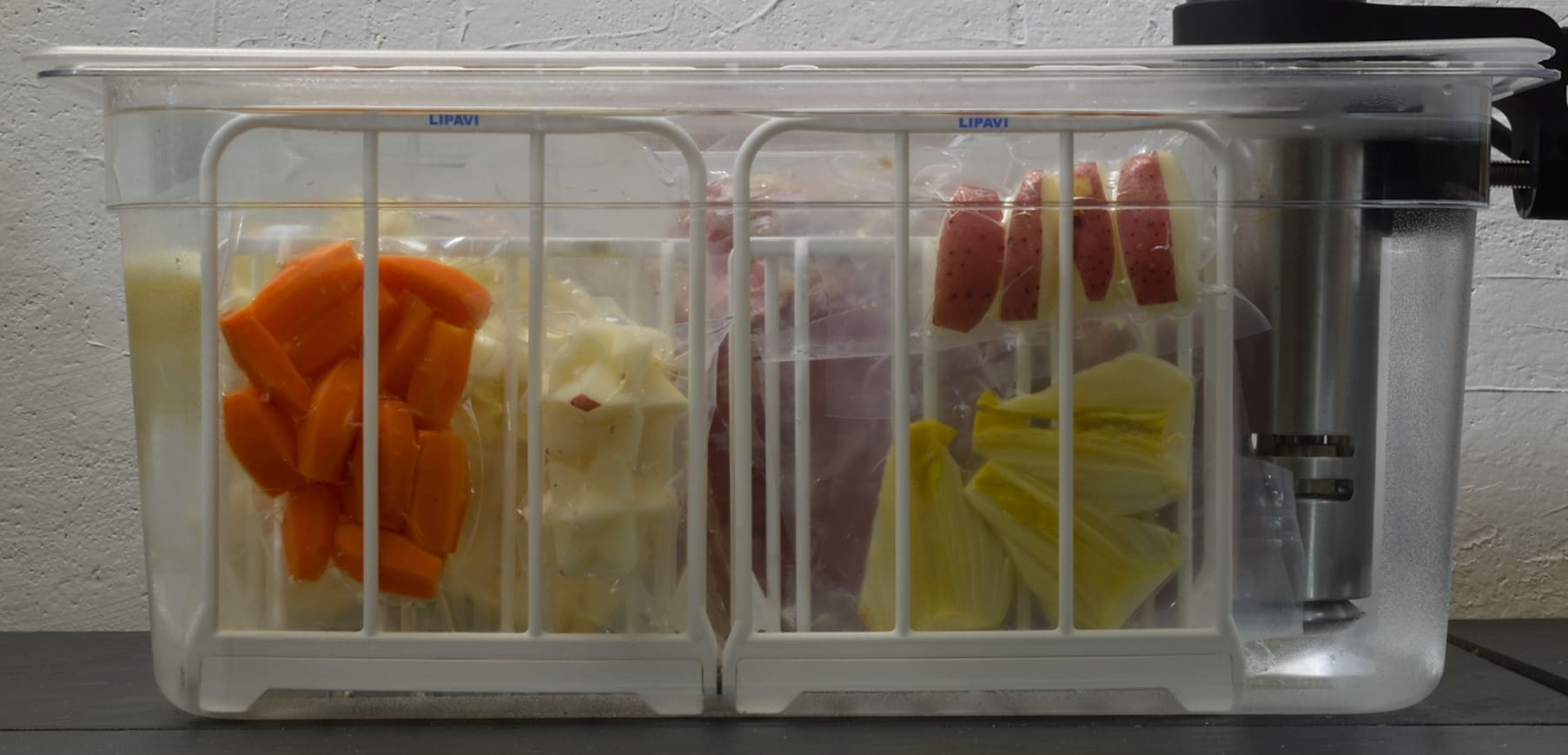
Lower the pouches into the bath set to 183 F/84 C. Process for one hour. After that interval has been achieved, lower the bath temperature to 128 F/53 C. In this state, the packages can be held for up to eight hours without compromising quality or safety. 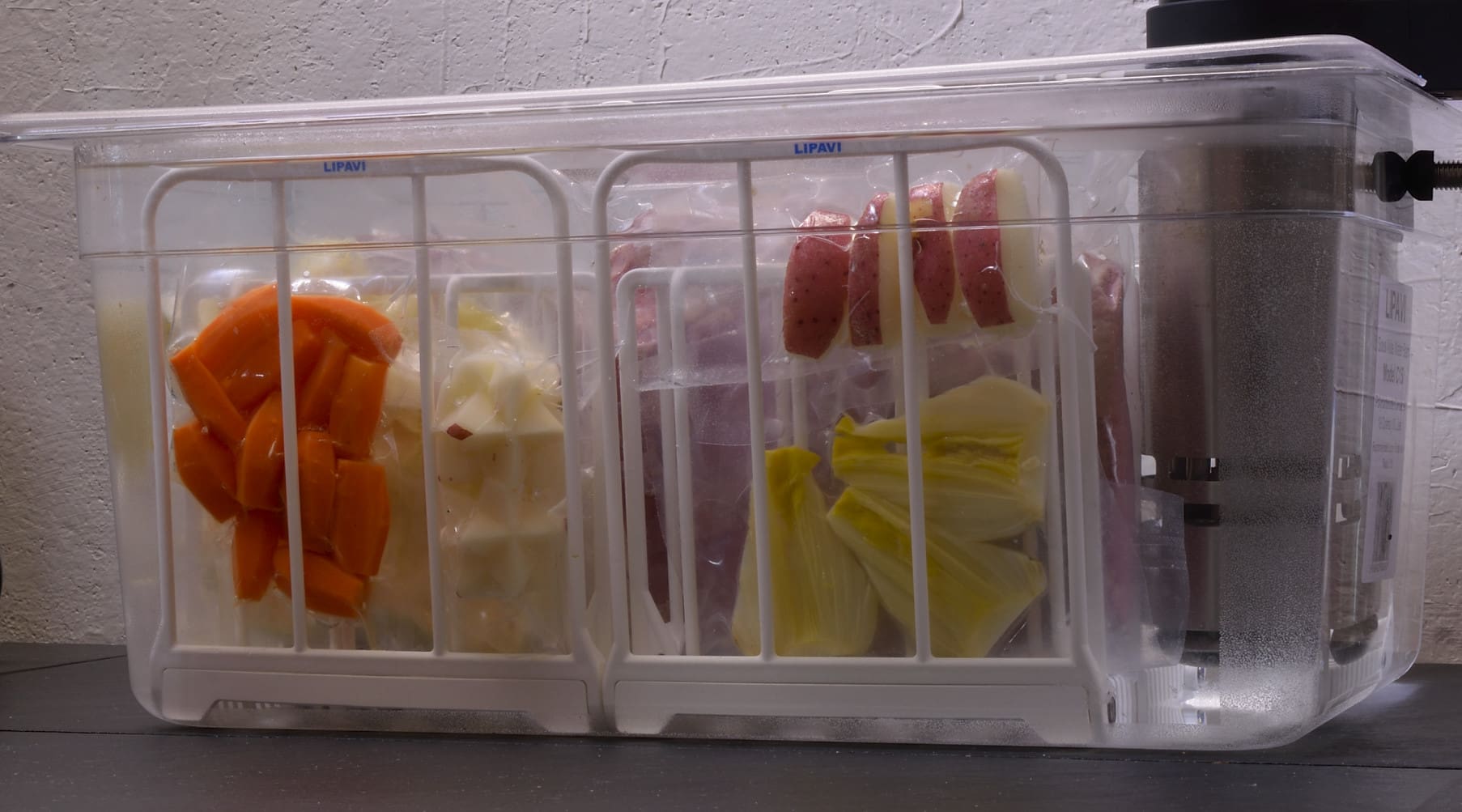
Finishing
The simmering broth will fill the air with the familiar bouquet that always accompanies this comforting dish. The flavors of the spices cannot penetrate the surface of proteins, so it is up to you to provide “aroma.”
Carefully remove the pouches from the bath. Cut open the bags and stage the ingredients into a large, flat bowl. Arrange in an orderly fashion as shown below. Add some broth from the bags or from the pot. Melt the butter and drizzle it over the meat and vegetables. Sprinkle with the chopped parsley.
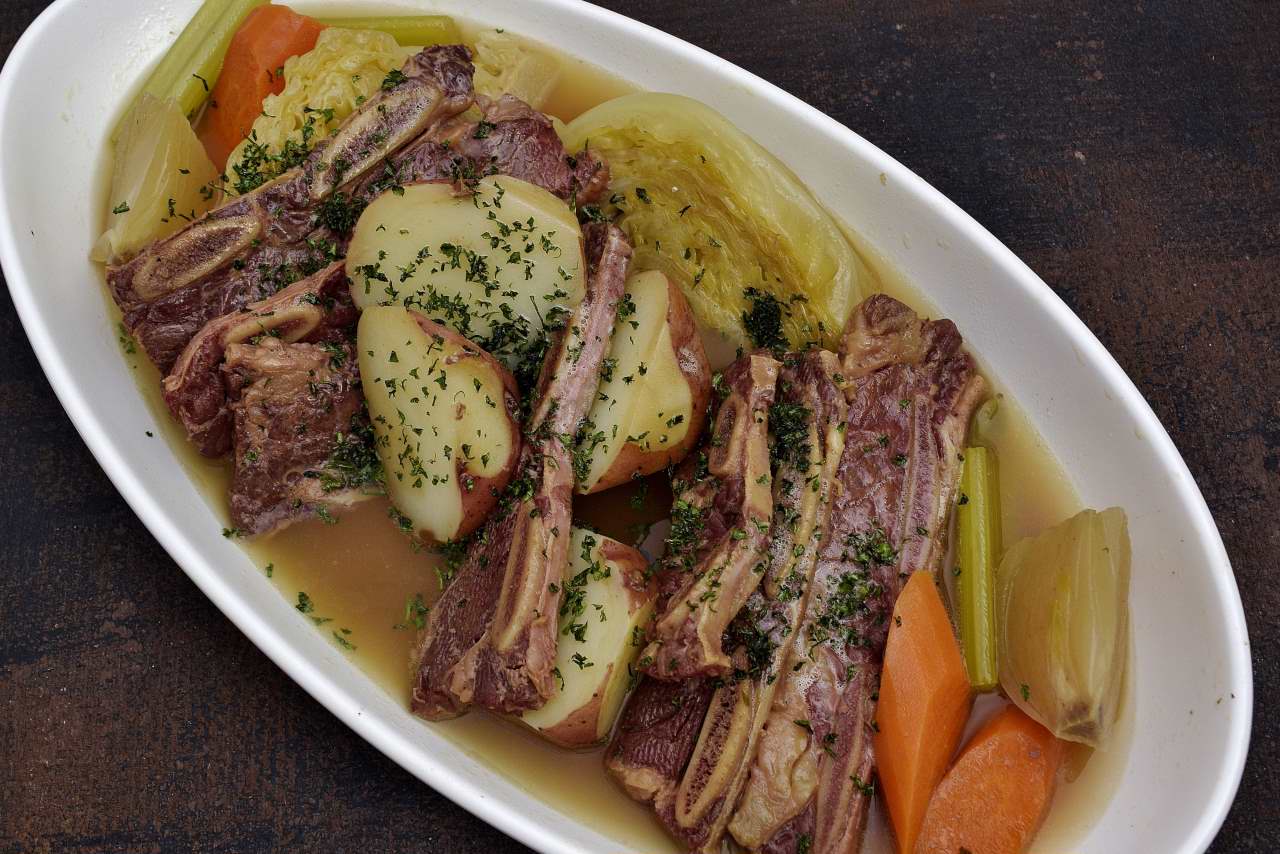
The platter can be served as is, “family style,” or, you can create individual servings like this:
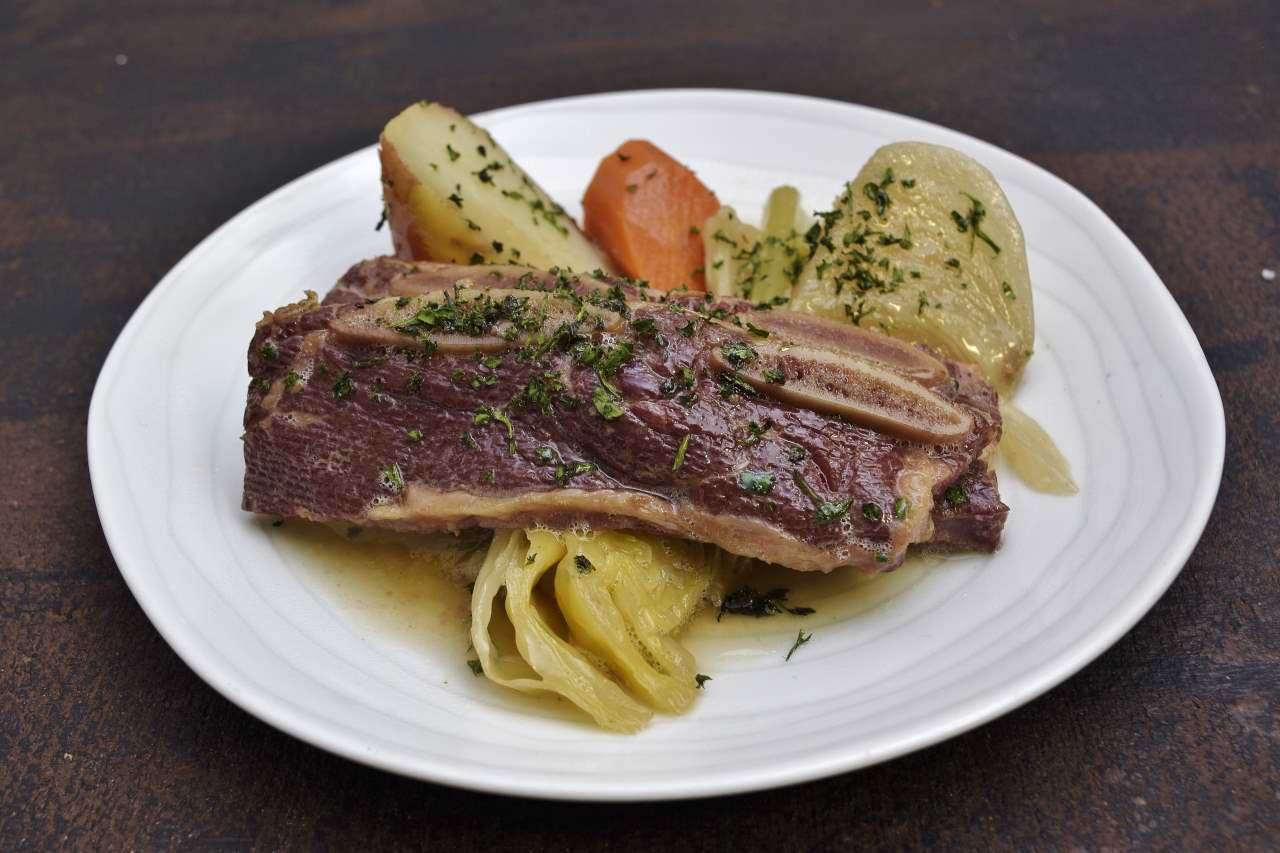
This dish is a crowd pleaser, and you need not wait for the Irish holiday to serve it to your family or even party guests! The flavor profile and splashing colors belie the overall simplicity of the dish. Most of your time is spent waiting, instead of perspiring over a hot stove and hoping that your corned beef is tender without falling apart. I love sous vide!

This dish is much more common in the United States than in Ireland, and is practically unheard of in many countries. They don’t know what they’re missing!
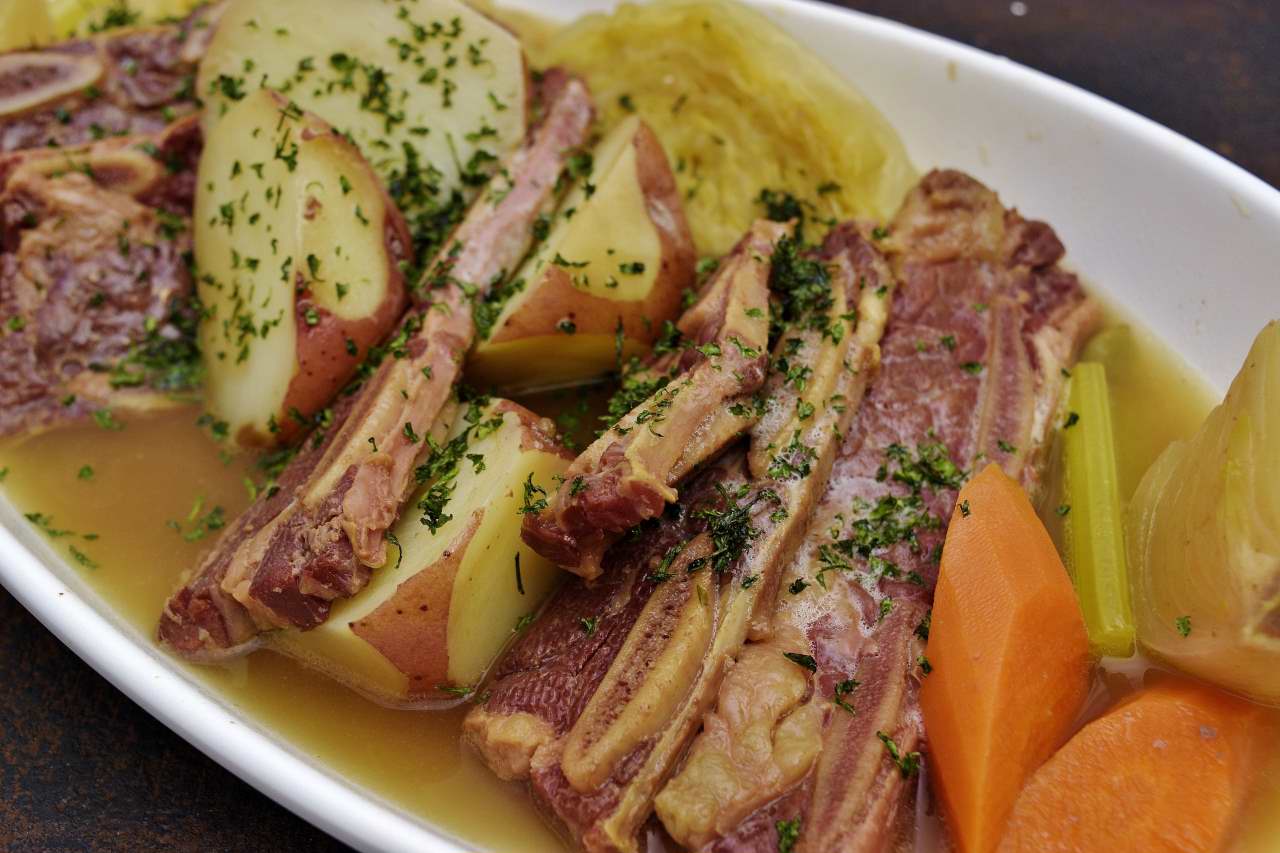
Enjoy!
Norm King
